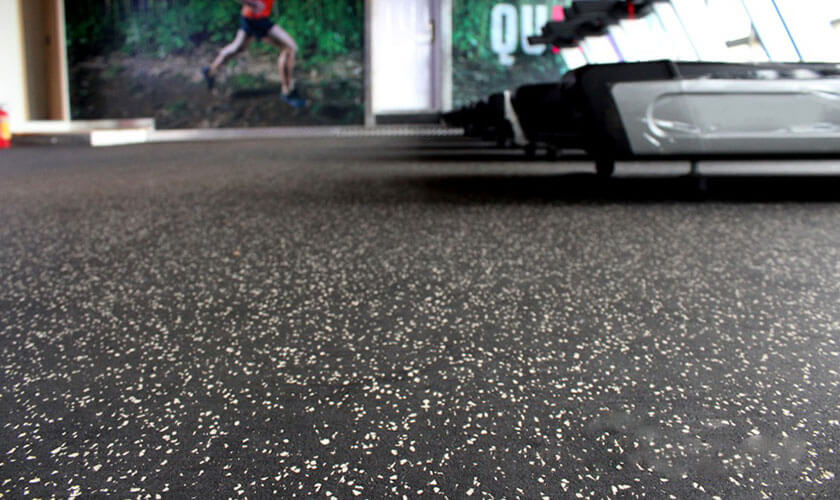As the world increasingly turns its focus to sustainability, the materials we choose for our homes, offices, and commercial spaces have never been more important. Traditional flooring options such as hardwood, tile, and carpet have long been the go-to choices, but a new contender has emerged in recent years that is rapidly gaining traction: rubber flooring.
This eco-friendly material, often overlooked in the past, is quickly becoming one of the most popular choices for sustainable interior design. Whether it’s in residential, commercial, or industrial spaces, Rubber flooring Dubai is showing that sustainability doesn’t have to come at the expense of aesthetics, functionality, or durability.
The Rise Rubber Flooring in Sustainable Design
Rubber flooring has been around for a while, but it has recently undergone a transformation that makes it more stylish, affordable, and accessible than ever before. The material is made primarily from recycled rubber—typically sourced from post-consumer tires, which significantly reduces waste. This recycled content is a key factor in its sustainability, making it an environmentally friendly alternative to more resource-intensive flooring options like hardwood or marble.
As concerns over the environmental impact of traditional flooring materials grow, designers and homeowners are turning to rubber flooring as a greener, smarter solution. Not only is it made from recycled materials, but it’s also 100% recyclable at the end of its life. This closed-loop lifecycle ensures that rubber flooring can be continuously reused, contributing to a circular economy and helping reduce the need for raw material extraction.
Durability That Lasts
One of the primary reasons why rubber flooring is so beneficial in sustainable design is its incredible durability. Unlike wood, carpet, or tile, rubber flooring can withstand high levels of foot traffic, extreme temperatures, and wear and tear over time. This makes it an ideal choice for spaces that experience a lot of footfall, such as gyms, schools, healthcare facilities, and offices.
Rubber floors are resistant to stains, water damage, and abrasions, and their flexible nature allows them to maintain their integrity even in high-traffic areas. This longevity means that homeowners and businesses won’t have to replace their flooring as frequently, saving resources and money in the long run. In addition, the need for replacement or repairs is significantly reduced, lowering the overall environmental impact of the building.
Eco-Friendly Manufacturing Process
Traditional flooring materials often require significant energy consumption during their production. The manufacturing process for rubber flooring, however, is far more energy-efficient. In many cases, the rubber used in flooring is recycled directly from waste tires, which would otherwise end up in landfills. By using recycled rubber, the production of rubber flooring consumes far fewer resources and generates less waste.
Moreover, the production of rubber flooring typically uses fewer chemicals than synthetic materials, reducing harmful emissions into the environment. With various eco-certifications available for rubber flooring products, such as Cradle to Cradle and GreenGuard, consumers can rest assured that they are making a responsible choice when opting for this material.
Health Benefits
In addition to its environmental benefits, rubber flooring also promotes healthier living and working environments. Many traditional flooring materials, such as vinyl or carpet, can off-gas harmful chemicals and contribute to indoor air pollution. Rubber, on the other hand, is naturally non-toxic and does not release harmful volatile organic compounds (VOCs) into the air.
For homes, offices, or healthcare spaces, rubber flooring provides an ideal solution for improving indoor air quality and ensuring the health of occupants. It’s also naturally antimicrobial, which means that it resists the growth of mold, bacteria, and mildew, making it particularly beneficial in areas with high moisture levels such as kitchens and bathrooms.
Another significant health benefit is the comfort provided by rubber flooring. The material has a slight cushioning effect, making it softer underfoot and more comfortable to stand or walk on for long periods. This ergonomic advantage is particularly useful in office environments, where employees are on their feet throughout the day, or in gyms, where the flooring provides extra protection during physical activities.
Aesthetic Flexibility and Design Options
Rubber flooring is no longer the dull, industrial-looking material it once was. Modern advancements have allowed for a wide variety of colors, textures, and patterns, making it suitable for a range of interior styles. Whether you are looking for sleek, minimalistic designs for a contemporary home or bright, playful options for a daycare center, rubber flooring can easily fit into any aesthetic.
Rubber tiles, rolls, and mats are available in various styles, from smooth and glossy to textured finishes, allowing homeowners and businesses to choose the look that best suits their design vision. Many manufacturers also offer custom designs, enabling unique patterns or logo imprints, making rubber flooring an attractive choice for retail spaces and branding purposes.
Rubber Flooring in Green Building Certifications
As the demand for sustainable building materials grows, many architects and designers are turning to rubber flooring as an essential part of green building projects. The material’s renewable properties and low environmental impact make it a perfect fit for projects seeking green certifications such as LEED (Leadership in Energy and Environmental Design) or BREEAM (Building Research Establishment Environmental Assessment Method).
Rubber flooring’s ability to meet the stringent criteria set forth by these certification programs has solidified its place in the sustainable interior design world. Its contribution to reducing a building’s carbon footprint, minimizing waste, and improving indoor air quality makes it a crucial component in the ongoing effort to design greener, more energy-efficient spaces.
Conclusion
Incorporating rubber Flooring Dubai into your interior design not only offers a solution that’s both eco-friendly and stylish but also provides long-lasting benefits that make it an investment in sustainability. From its ability to reduce waste and conserve resources to its health-conscious qualities and aesthetic flexibility, rubber flooring is emerging as a frontrunner in the world of sustainable design.



